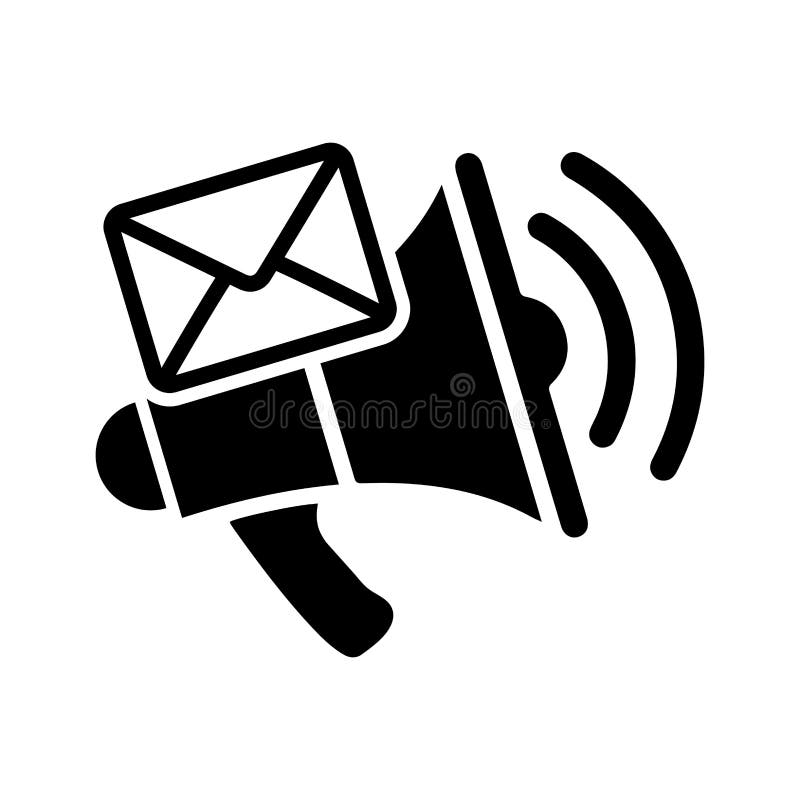Work for yourself | Click here to proceed
Start working today | Join now
Submit your information
Email marketing has come a long way since the early days of the internet. And, with the rise of social media, it’s only going to become more important. As a result, email marketing icons are becoming more and more popular.
There are a number of reasons for this. First, email is one of the most effective ways to reach potential customers. It has a high conversion rate and can be very targeted.
Second, social media platforms like Facebook and Twitter have made it easier than ever to share content with friends and followers. And finally, people are increasingly using their mobile devices to check email, so having an icon that looks good on a small screen is essential.
Click Here to Start Work from Home Jobs
Email marketing is one of the most effective ways to reach your customers. It allows you to stay in touch with them and keep them updated on your latest products and services. But, with so many email marketing icons out there, how do you choose the right one for your business?
Here are a few things to consider when choosing an email marketing icon: 1. Make sure it’s recognizable. Your icon should be easily recognizable so that your subscribers know who it is from at a glance.
If it’s too complicated or busy, they may just delete it without even opening it. 2. Keep it simple. An icon doesn’t need to be fancy or detailed to be effective.
In fact, simpler icons are often more eye-catching and memorable. 3. Consider using a symbol or logo. If you have a strong brand identity, consider using your company’s logo as your email marketing icon.
This will help subscribers associate your emails with your brand and make them more likely to open them. 4. Choose an appropriate color scheme . Your email marketing icon should use colors that match or complement your company’s branding .
Using too many colors can be overwhelming, so stick to 1-2 main colors for best results . gt s ymbolism associated with certaincolors , such as blue for trustworthiness .
Create an Email Signature with Canva with multiple Clickable Links & Social Media Icons
What is Email Marketing
Email marketing is a form of direct marketing that uses electronic mail as a means of communicating commercial or fundraising messages to an audience. In its broadest sense, every email sent to a potential or current customer could be considered email marketing. However, the term is usually used to refer to: (1) Sending emails with the purpose of enhancing the relationship of a merchant with its current or previous customers, (2) sending emails with the purpose of acquiring new customers or convincing current customers to purchase something immediately, and (3) adding advertisements to emails sent by other companies to their customers.
Email marketing can be done to either sold lists of names and addresses, which are sometimes referred to as opt-in lists, or through databases built from scratch.
What are the Benefits of Email Marketing
Email marketing is a form of direct marketing that uses electronic mail as a means of communicating commercial or fundraising messages to an audience. In its broadest sense, every email sent to a potential or current customer could be considered email marketing. However, the term is usually used to refer to:
Sending emails with the primary purpose of enhancing the relationship of a merchant with its current or previous customers, encouraging customer loyalty and repeat business, acquiring new customers or convincing current customers to purchase something immediately; and Adding advertisements to emails sent by other companies in order to earn revenue from third-party advertisers (known as “advertiser affiliate programs”). The benefits of email marketing are many.
First, it’s a quick and easy way to reach your target market without spending a lot of money on advertising. Email is also an affordable way to stay in touch with your list subscribers and keep them updated on what’s happening with your business. Additionally, email provides you with an immediate way to track who opens your messages and who clicks on the links within them.
This information can help you fine-tune your future campaigns for even better results.
How Can I Get Started With Email Marketing
Email marketing can be a great way to connect with your customers and promote your business. But where do you start? Here are some tips to get you started with email marketing:
1. Define your goals. What do you want to achieve with email marketing? More sales?
More website traffic? Better engagement with your customers? Once you know what you want to achieve, you can start planning your email campaigns accordingly.
2. Build your mailing list. You need a list of people to send your emails to! There are a number of ways to build up your mailing list, such as offering an opt-in on your website or blog, running competitions or giveaways, or even buying lists from reputable providers.
Just make sure that everyone on your list has opted in to receive emails from you – otherwise you could be accused of spamming! 3. Write great content. Your emails need to contain interesting and valuable content if you want people to read them and take action on them.
Take the time to plan and write well-crafted emails that will resonate with your audience. 4. Use images and videos wisely. Include images and videos in your emails judiciously – too many can make them seem cluttered and unprofessional.
But used sparingly, they can add visual interest and help get your message across more effectively. 5. Send at the right time (and frequency). Timing is everything when it comes to email marketing! Make sure you send your emails at a time when people are likely to check their inboxes, and don’t bombard them with too many messages (or they’ll soon tune out). Frequency is also important – sending too many emails can be just as off-putting as sending too few! Find a happy medium that works for both you and your subscribers..
What are Some Best Practices for Email Marketing
The first step to create an effective email marketing campaign is to develop a clear and concise message. The subject line of the email should be brief and to the point, so that recipients know what the email is about at a glance. The body of the email should also be clear and concise, with a focus on one or two key points.
It’s also important to make sure that all links in the email are working properly. Once you have your message developed, it’s time to start building your list of subscribers. To do this, you’ll need to gather contact information from potential subscribers.
This can be done through online sign-up forms or by manually adding contacts from your customer database. Once you have a list of contacts, you can begin sending out emails. When sending emails, it’s important to keep track of who opens and clicks on each email.
This information can help you fine-tune your future campaigns for better results. Additionally, using an Email Service Provider (ESP) can help simplify the process of managing your campaign as well as provide valuable insights into subscriber behavior.
How Can I Measure the Results of My Email Marketing Campaigns
It’s easy to get caught up in the details of email marketing and forget the bigger picture. So, how can you be sure that your email marketing campaigns are actually effective? Here are some metrics you can use to measure the results of your email marketing campaigns and improve your ROI:
1. Open rate – This measures how many people open your emails. A good open rate is between 20-30%. If your open rate is low, consider changing up your subject lines or sending fewer emails.
2. Click-through rate – This measures how many people click on links in your emails. A good click-through rate is between 2-5%. If your click-through rate is low, consider adding more compelling calls to action or relevant content in your emails.
3. Conversion rate – This measures how many people take the desired action after clicking through from your email (such as making a purchase). A good conversion rate will vary depending on what you’re selling, but generally speaking, a good conversion rate is between 1-2%. If your conversion rates are low, consider testing different offer types or lead magnets to see what works best for your audience.
4. unsubscribe rate – This measures how many people unsubscribe from your emails after receiving them. A good unsubscribe rate is below 0.5%. If you have a high unsubscribe rate, it could be an indication that you’re sending too many emails or that they’re not relevant to your subscribers anymore.
Either way, it’s worth taking a look at why people are unsubscribing and seeing if there’s anything you can do to improve the situation. 5 . bounce Rate -This measures how many of your Emails “bounce” or get returned as undeliverable .
A acceptable bouceRate under 5% ,with 0% being ideal .if Your bouceRate Is High ,checkTo seeIf You have any invalid Email Addresses InYour List These are just a few of the most important metrics you should track when measuring the results of your email marketing campaigns.
Click Here to Start Work from Home Jobs

Credit: www.dreamstime.com
Email Marketing Icon Png
Email marketing is one of the most effective ways to reach your customers and promote your business. However, it can be difficult to know where to start. That’s where email marketing icons can come in handy.
Email marketing icons are small images that can be used to represent different aspects of email marketing. For example, you might use an icon to represent an opt-in form, a subscription list, or an email campaign. Using icons in your email marketing can help you create a more visually appealing and engaging message for your subscribers.
Plus, they can help you save time by communicating complex information quickly and easily. There are a wide variety of email marketing icons available online. Be sure to choose ones that fit with your brand identity and will appeal to your target audience.
With a little bit of creativity, you can use email marketing icons to take your campaigns to the next level!
Content Marketing Icon
As a business owner, you know that content is important. After all, it’s what helps you attract and engage your audience. But what happens when your content isn’t resonating with your audience?
That’s where a content marketing icon comes in. A content marketing icon is someone who can help you create content that will connect with your audience and achieve your business goals. Whether you’re looking to increase brand awareness, drive traffic to your website, or generate leads, a content marketing icon can help you get there.
When it comes to finding a content marketing icon, there are a few things to keep in mind. First, consider their industry experience. Do they have a deep understanding of the latest trends in your industry?
Are they up-to-date on the latest news and developments? Second, take a look at their portfolio of work. What kind of results have they been able to achieve for their clients?
Finally, don’t forget about fit. Does this person understand your company’s voice and mission? Do they share your values?
If you’re ready to take your content marketing to the next level, it’s time to find yourself a content marketing icon.
Email Marketing Svg
Email marketing is one of the most effective ways to reach your customers and promote your products or services. But what is email marketing, and how can you use it to achieve your business goals? Email marketing is a form of direct marketing that uses email to communicate with potential and current customers.
It can be used to promote special offers, new products or services, or simply keep in touch with your customers. To run an effective email marketing campaign, you need to understand how to use email effectively and have a plan for what you want to achieve. This guide will give you all the information you need to get started with email marketing, including tips on how to create an email list, design compelling emails, measure your results, and more.
Click Here to Start Work from Home Jobs
Conclusion
In today’s business world, email marketing is an essential tool for reaching out to potential customers. An email marketing icon can help you stand out in a crowded inbox and get your message across quickly and effectively. Here are some tips for choosing the right email marketing icon for your business:
1. Keep it simple: Choose an icon that is easy to understand and recognisable. Avoid using complex graphics or images that might be confusing to your recipients. 2. Make it relevant: Use an icon that represents what your email is about.
For example, if you’re sending a promotion for a new product, consider using an image of the product itself. 3. Be consistent: Use the same email marketing icon in all of your correspondence so that recipients will begin to associate it with your brand. This will make it easier for them to recognise your emails in the future and increase the likelihood that they’ll open them.
4. Test different versions: Try out a few different email marketing icons and see which ones generate the most interest from recipients. You can use A/B testing to compare different versions side-by-side and see which one performs better.



